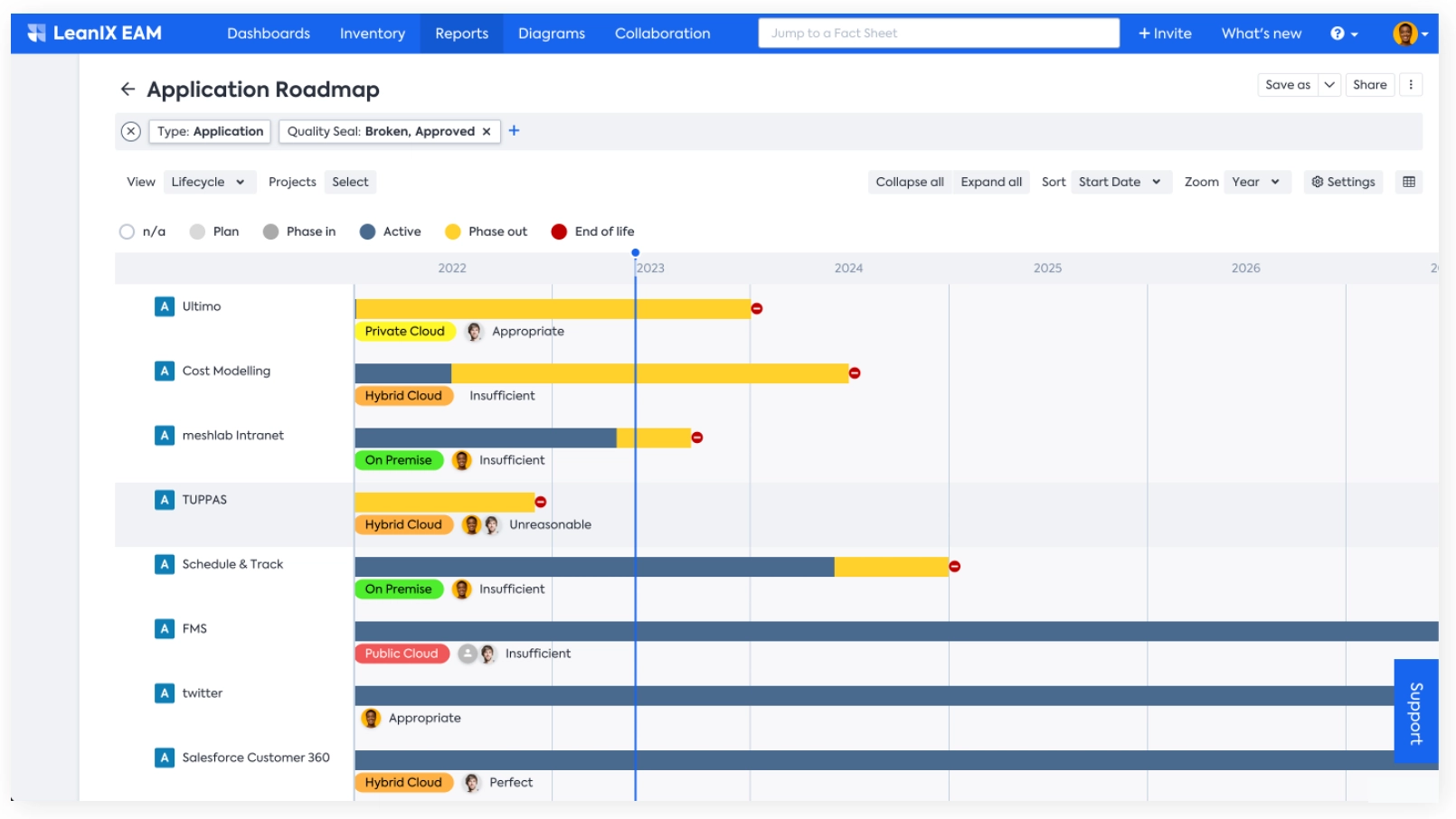Step 2. Plan Transformation Roadmap
After scoping for the most suitable applications, it's time to plan your application modernization initiatives. This involves creating a Transformation roadmap. Since you have already grouped applications within a certain strategy and prioritized them in the previous step, you can easily implement this into the roadmap.
You can structure your transformation program as Project Fact Sheets in SAP LeanIX. A typical example is to structure your transformation into three hierarchies:

- Level 1 - Your overall transformation program, which will be your umbrella project, in the example below it is ‘Cloud Transformation 2025’
- Level 2 - Children projects based on your modernization strategy; in the example below, it is Repurchase, Rehosting, etc.
- level 3 - Smaller, broken-down projects in multiple waves representing applications of different priorities (e.g., quick wins vs. medium/long term, by capability, region, etc.). We recommend that you pick an approach that suits your organizational needs the best.
By using the wave approach, you can effectively prioritize applications. Furthermore, this approach enables you to report results to your management and other stakeholders early and incorporate their feedback into subsequent waves.
As projects grow larger and application dependencies may necessitate synchronizing certain steps, consider using milestones that you agree on with all parties involved in your project or even your organization. SAP LeanIX Architecture and Road Map Planning allows you to work with Milestones and provides a comprehensive overview of when and how projects are connected to your overarching transformation program. Milestones are inherited from the highest level down to all child projects, allowing you to easily view how they affect your applications.

Make use of Roadmap Reports to improve decision-making and status reporting. One can add much relevant information from the Fact Sheets, such as Tags, Subscription Roles, and various Fields for better context. It helps enrich the context and increases the collaboration and interactivity of the report.
Bringing these extra details to the Roadmap Report, for example, can help answer questions such as: Who's responsible for the migration of a particular Application, which is currently hosted on-premise, has an insufficient functional fit, and will reach the end-of-life in a few months? etc.

Refer to our documentation on Roadmap Reports to discover other useful features.
Who is responsible to maintain data?
Most common is that enterprise architects would collaborate with project managers to ensure project information is up-to-date. Enterprise architects usually take the lead in inputting and maintaining information in SAP LeanIX by defining responsible persons. They will also work with all other stakeholders to align on available resources, such as business owners, sponsors, and domain managers, to determine if funding is available for the transformation initiative.
Based on this information, make any necessary adjustments and finalize the transformation roadmap.
SAP LeanIX is not a project or program management tool; you don’t want to capture each and every detail. Instead, use it to provide high-level information and transparency for program and project managers and top management.
It allows you to model changes and show their impact on the roadmap and budget.Project managers can use this information to build detailed project plans
SAP LeanIX is working on a new JIRA integration that will help you automatically adjust timelines based on changes in your epics. Any changes in JIRA projects will have an impact in SAP LeanIX - a vital part of keeping your project plan up to date.
Next Step
Updated 23 days ago
